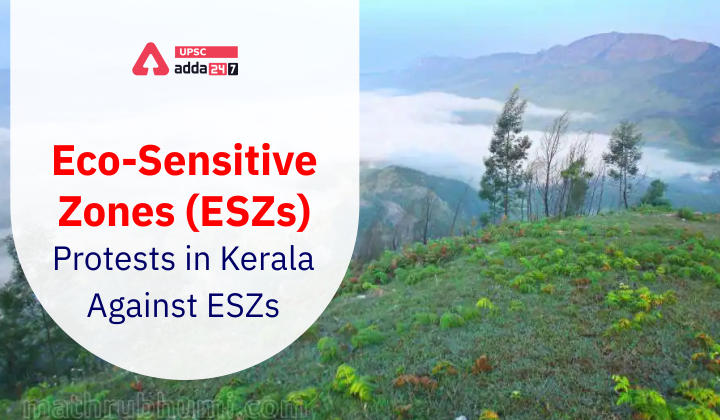Table of Contents
Eco-Sensitive Zones (ESZs)- Relevance for UPSC Exam
Eco-Sensitive Zones (ESZs): Eco-Sensitive Zones (ESZs) are a dedicated area around natural ecosystems. Eco-Sensitive Zones (ESZs) are often threatened from external factors. Eco-Sensitive Zones (ESZs) are part of UPSC Mains GS Paper 3 (Environment: Conservation, environmental pollution and degradation).
Eco-Sensitive Zones (ESZs) in News
- Recently, the Supreme Court ordered to establish 1-km Eco-Sensitive Zones (ESZs) around all protected areas, wildlife sanctuaries and national parks in Kerala.
- Farmers in Kerala are protesting across several high ranges of the state against SC’s order to establish Eco-Sensitive Zones (ESZs).
Why farmers are protesting against Eco-Sensitive Zones (ESZs)?
- Kerala farmer concerns are borne out of the fear of farmers losing their livelihood opportunities in the concerned areas.
- The protests against ESZs has found support from the state government, opposition parties and the Catholic Church.
- Farmer’s groups and political parties have been demanding that all human settlements be exempt from the ESZ ruling as these have very dense human settlement.
What are Eco-Sensitive Zones (ESZs)?
- About: As per the National Wildlife Action Plan (2002-2016) land within 10 km of the boundaries of national parks and wildlife sanctuaries is to be notified as eco-fragile zones or Eco-Sensitive Zones (ESZ).
- National Wildlife Action Plan (2002-2016) was issued by the Union Ministry of Environment, Forest and Climate Change.
- Sensitive Corridors: While the 10-km rule is implemented as a general principle, the extent of its application can vary.
- Areas beyond 10-km can also be notified by the Union government as ESZs, if they hold larger ecologically important “sensitive corridors.”
- Prohibited Activities in ESZs: the guidelines list the activities prohibited in an ESZ, such as commercial mining, saw mills, commercial use of wood, etc.
- Regulated Activities in ESZs: activities like felling of trees are regulated within Eco-Sensitive Zones (ESZs).
- Permitted Activities: there are permitted activities in the ESZs like ongoing agricultural or horticultural practices, rainwater harvesting, organic farming, among others.
Significance of Eco-Sensitive Zones (ESZs)
- ESZs are created as “shock absorbers” for the protected areas, to minimize the negative impact on the “fragile ecosystems” by certain human activities taking place nearby.
- ESZs areas are meant to act as a transition zone from areas requiring higher protection to those requiring lesser protection.
- ESZs are not meant to hamper the daily activities of people living in the vicinity, but are meant to guard the protected areas and “refine the environment around them”.
ESG Funds: Environmental Social and Governance Funds





 TSPSC Group 1 Question Paper 2024, Downl...
TSPSC Group 1 Question Paper 2024, Downl...
 TSPSC Group 1 Answer key 2024 Out, Downl...
TSPSC Group 1 Answer key 2024 Out, Downl...
 UPSC Prelims 2024 Question Paper, Downlo...
UPSC Prelims 2024 Question Paper, Downlo...
